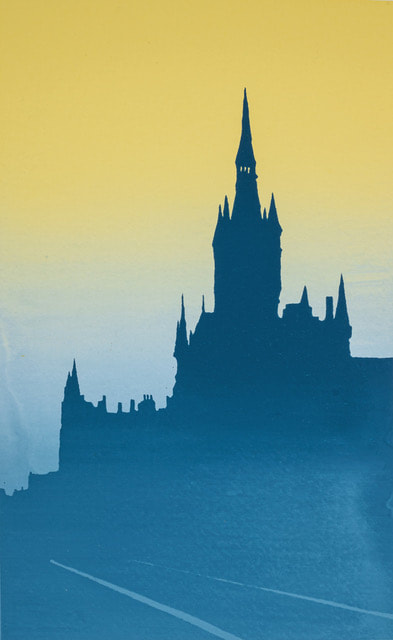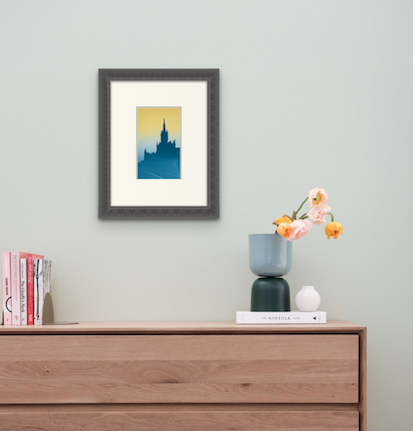St Pancras I by Ian Scott Massie
Variable Edition Reduction Screen Print - Edition of 19
12" x 10" Mounted size - 5" x 8" Image size
Available: unframed @ £119
To shop, please click here
12" x 10" Mounted size - 5" x 8" Image size
Available: unframed @ £119
To shop, please click here
RAILWAY TIME
I’m a very punctual person, something which entertains and infuriates my friends in equal measure, so time to me is a subject of great importance. Until 1880 clocks across Britain gave different times - Norwich, for example, was a quarter of an hour ahead of Bristol. But that year The Definition of Time Act introduced standardisation across the country. Railway Time, however, had been around for years.
Defined by the clocks of the Royal Observatory, Greenwich Mean Time was adopted by the Great Western Railway in 1840. They were followed soon after by the other railway companies. Clocks became a prominent feature of station design and one of these, the St Pancras clock has a complicated history.
The first clock in the train shed was large: 16’9” in diameter with a long hand measuring 7’3”. After a century of service British Railways (BR) decided to replace it. The old clock was sold to an American buyer and work commenced on taking it down. It’s unclear what happened but somehow the clock was dropped and broken in pieces.
The fragments were salvaged by a collector of railway clocks, Roland Haggard. He put the pieces in a barrow, loaded them on a train, and went home to Nottinghamshire.
Some time later BR decided to create a modern timepiece of glass and reinforced plastic based on the design of original clock. Their designers travelled to Nottinghamshire and took casts from Roland’s carefully preserved pieces. Still later, when St Pancras became “St Pancras International”, yet another clock was commissioned, this time from Dent and Smith of Derby. Once again, this was built to the same dimensions as the very first clock and now looks down over the sleek Eurostar trains that glide in and out of the station.
Defined by the clocks of the Royal Observatory, Greenwich Mean Time was adopted by the Great Western Railway in 1840. They were followed soon after by the other railway companies. Clocks became a prominent feature of station design and one of these, the St Pancras clock has a complicated history.
The first clock in the train shed was large: 16’9” in diameter with a long hand measuring 7’3”. After a century of service British Railways (BR) decided to replace it. The old clock was sold to an American buyer and work commenced on taking it down. It’s unclear what happened but somehow the clock was dropped and broken in pieces.
The fragments were salvaged by a collector of railway clocks, Roland Haggard. He put the pieces in a barrow, loaded them on a train, and went home to Nottinghamshire.
Some time later BR decided to create a modern timepiece of glass and reinforced plastic based on the design of original clock. Their designers travelled to Nottinghamshire and took casts from Roland’s carefully preserved pieces. Still later, when St Pancras became “St Pancras International”, yet another clock was commissioned, this time from Dent and Smith of Derby. Once again, this was built to the same dimensions as the very first clock and now looks down over the sleek Eurostar trains that glide in and out of the station.





